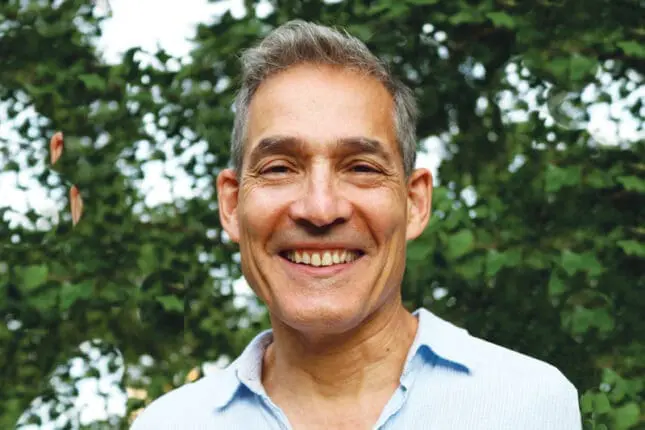It’s been 42 years since post-traumatic stress disorder was added to the DSM. Since then, the definition has gone through several revisions, each of which has attempted to keep our conceptualization of trauma, and how we treat it, within certain parameters. But amid what some are calling “an age of trauma,” have the guardrails failed? Have we lost sight of what trauma really looks like? And if so, are we diagnosing too freely?
According to the Department of Veterans Affairs, roughly six percent of the U.S. population will have PTSD at some point in their lives. That’s about 12 million adults in any given year—a number the VA characterizes as “not rare.”
It may seem surprising to some that those numbers aren’t higher. After all, between increased political upheaval, racial violence, climate change, and a global pandemic, we seem to be living in a perfect storm of traumatic stress. Who among us isn’t feeling at least a little traumatized right now?
According to George Bonanno, a professor of clinical psychology at Columbia University and director of the Loss, Trauma, and Emotion Lab at Columbia’s Teachers College, who’s spent more than 25 years studying trauma and resilience, conflating the experience of traumatic stress with being traumatized is a problem in our field. Research, he says, shows that while many of us will experience traumatic stress, we’re inherently resilient, and those stress symptoms—which often subside—don’t meet the clinical definition of trauma.
Unsurprisingly, this runs up against much of the current, dominant thinking around trauma—and the motivation many therapists feel to shine a light on its pervasiveness. But rather than instigating controversy, Bonanno sees his work as a call for refocusing trauma treatment. In his book, The End of Trauma: How the New Science of Resilience Is Changing How We Think About PTSD, released last September, he suggests that bolstering resilience may be our strongest clinical intervention. In a review of the book in The Wall Street Journal, psychologist Carol Tavris said it was “an important course-correction to what is now received wisdom about trauma and how to treat it.” Some in the field don’t agree—a fact that we discuss in this interview.
– – – –
Ryan Howes: In your book, you explore how mental health professionals expected a flood of PTSD in New York City after 9/11 that didn’t come. How was that received?
George Bonanno: Even today, I get a lot of pushback from mental health professionals for pointing that out. But the same thing is happening with the COVID pandemic. Many people were directly affected and traumatized by it, and the whole world, to some extent, was distressed and disturbed by it, but distress and PTSD are not the same thing.
So why do we think PTSD is so widespread? I think there’s a contagion phenomenon that tends to happen. Since it was first formalized as a diagnosis, there’s been a ton of interest around PTSD—a flood of research, clinical work, new treatments—and that trickles down to the public through popular books. Those books tend to be about how intractable PTSD is, which is completely understandable, but then a really dark picture reaches people—which grabs them, because we’re wired to perceive threat with very little information.
There’s a lot that’s right about trauma in the literature, and there have been tremendous advances in how we treat it, but I think we overestimate its prevalence. And I think there’s a problem in how we use the term traumatic events. I force myself to call them potentially traumatic events, because even the worst of disasters won’t cause PTSD for everyone. The research bears this out. Only a small minority of people will develop lasting, enduring trauma reactions. A lot of people will be distressed and disturbed for a while, but that’s traumatic stress, not PTSD. People don’t like to hear me say it, but this is an empirical fact that’s lost in the zeitgeist of the times.
RH: People seem to think that if you’re not traumatized, you’re resilient. But you paint a different picture.
Bonanno: There’s an absurd essentialism to thinking that people who aren’t traumatized and show resilient patterns are themselves resilient, or that traumatized people are not resilient. I argue against that perspective because it’s not empirically true. In our research, which are long-term studies, we don’t find personality traits predict anything very well in terms of who ends up traumatized. And no one is guaranteed to be resilient. Resilience takes work, hard work. There’s a myth that there’s a resilient type, but empirically we don’t see that.
RH: Do some people just have an easier time moving through suffering and finding meaning?
Bonanno: Resilient people actually score low when they’re asked about searching for meaning. Looking for meaning is what you do when you’re disturbed or distressed. Searching for meaning is usually tied to stress, not trauma.
RH: Your book is called The End of Trauma: How the New Science of Resilience Is Changing How We Think about PTSD. It’s a controversial title. What is the new science, and how is it clinically applicable?
Bonanno: My working title was How Flexibility Works, but the publishers changed it. The science simply highlights the fact that more people are more resilient than we realize, and that the pathway to resilience is flexibility. That’s crucial. Flexibility is about being able to adapt one’s behavior to the situational challenges at hand. And building flexibility is a component of a lot of treatments already.
RH: You recently tweeted that the body doesn’t actually “keep the score” when it comes to trauma. Given the field’s reverence for this idea, brought to life by Bessel van der Kolk in his still bestselling book, that must’ve caused a reaction?
Bonanno: Well, the body certainly becomes dysregulated when we’re extremely distressed. And people who’ve gone through a severe traumatic past do experience bodily changes: epigenetic and hormonal changes. The hypothalamic–pituitary–adrenal axis is dysregulated in people with PTSD. It’s a mind–body interaction.
The problem I have with the idea that the body keeps the score is that van der Kolk says the body registers and remembers trauma that people are not aware of. And I know no mechanism that would allow that to happen. If a person is so traumatized that they have a bodily dysregulated pattern, they know it.
RH: So there aren’t repressed memories?
Bonanno: People forget things, sure. But it’s not like the body is registering all this traumatic stuff that the brain’s not aware of. My brilliant friend Lisa Feldman Barrett has put it this way: “The mind keeps the score, and the body is the scorecard.” So the body may be showing a lot of symptoms, but the mind is driving that.
Van der Kolk says that traumas are registered in the primitive brain, but while there are precortical structures that regulate our bodily functions that we have very little awareness of, they don’t record trauma. Trauma is—and I think a lot of people don’t understand this—a narrative concept. It’s a concept with episodic narrative coherence. It’s a story. It’s not a conditioned reflex. If you have a trauma, that story doesn’t get stored anywhere in your body—it’s a distributed memory across your brain. The hippocampus might keep track of that, but that’s not in the body.
RH: Hearing this, I’d imagine that you don’t jibe with the ACES framework. I bet that upsets a lot of people.
Bonanno: Yeah. ACES scores are based largely on retrospective self-reports. I think that’s hugely inaccurate and dangerous.
RH: Those are strong words.
Bonanno: There was a report in the Journal of the American Medical Association that looked at over 25,000 people with documented histories of abuse. This was a review and meta-analysis of studies that included both prospective measures (identifying maltreatment and then following over time) and retrospective measures (asking about the past). The gist is that 52 percent of people who’d been identified at the time as maltreated didn’t retrospectively report it, and likewise, 56 percent of people retrospectively reporting childhood maltreatment hadn’t been identified as maltreated at the time. Fifty percent accuracy is pretty low.
I followed similar studies for years because I’d done some research on abuse earlier in my career. Ultimately, reporting of abuse retrospectively is not very accurate.
RH: In your view, how should we be treating trauma?
Bonanno: There’s really good empirical evidence on the treatments for PTSD, and lots of things work. Exposure therapy has got a pretty good success rate. There are treatments for PTSD involving systematic muscle relaxation that work. And psychedelic therapy is very promising. I have a colleague who does equine therapy, and that seems promising as well, in addition to regular behavioral approaches. The key is that not everyone who’s been through a potentially traumatic event has PTSD and needs to be treated for PTSD.
The VA has a poor record with treating veterans because they often treat them for PTSD just because they’re veterans and having problems. If people are treated for PTSD and they don’t actually have it, even if they remember potentially traumatic events, that’s not going to be functional. I’m interested instead in treating transition stress, which is the stress that soldiers feel when they leave the military and transition back to civilian life. It’s prevalent and highly problematic.
RH: What are your thoughts on the rise of somatic treatment modalities?
Bonanno: I don’t see any particular reason to be opposed to those treatments. I know there’s some work on weightlifting or resistance training for PTSD. It does, in a way, feed into the concept of flexibility. When people work on having flexibility, they gain a sense of “I can do this” when confronted with obstacles. ACT, in particular, focuses on this kind of motivation.
RH: What’s one message you have for mental health professionals treating trauma?
Bonanno: Psychological trauma is real and very painful, as you well know. But abundant epidemiological data show that most of us have been exposed to at least one and often several violent and/or life-threatening events that would qualify as a potential trauma. The fact that somebody has experienced one or more of these events doesn’t mean they were traumatized. The research is crystal clear on this: most people are resilient to potential trauma. I truly hope I’m not insulting anyone, but I think these simple empirical facts often get lost in our desire to treat something like trauma, even when it may not be present.
Ryan Howes
Ryan Howes, Ph.D., ABPP is a Pasadena, California-based psychologist, musician, and author of the “Mental Health Journal for Men.” Learn more at ryanhowes.net.












